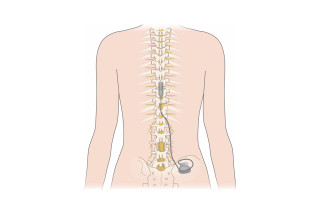The doctoral dissertation in the field of Surgery will be examined at the Faculty of Health Sciences at Kuopio campus.
What is the topic of your doctoral research? Why is it important to study the topic?
The treatment of neurogenic thoracic outlet syndrome is controversial. Neurogenic thoracic outlet syndrome (NTOS) is due to compression of brachial plexus in the thoracic outlet area. NTOS treatment is primarily conservative. Surgical treatment is considered in severely symptomatic cases.
What are the key findings or observations of your doctoral research?
The short- and long-term results after the surgical treatment were correlated with each other. The surgical results of patients operated on with the open transaxillary or video-assisted technique were similar in both the short- and long-term follow-up. Approximately 65% of the patients had a good or excellent surgical result at the 3-month follow-up. In the long-term follow-up, about 80% had a good or excellent outcome. The Cervical Brachial Symptom Questionnaire indicated that after surgery, the patients had only mild or moderate symptoms, and their functional performance measured by Quick Disabilities of Arm, Shoulder and Hand Questionnaire was only mildly limited at the long-term follow-up. The patients' ability to function improved, and a large proportion would have gone through the procedure again if given the choice now. A first rib stump length of more or less than 3 cm long had no correlation with the long-term outcomes. The first rib stump length was similar after open and video-assisted surgery.
How can the results of your doctoral research be utilised in practice?
Our findings support the most recent publications that it is worth offering operative treatment as an alternative to patients with troublesome NTOS symptoms if they do not respond to conservative treatment. The functional performance and symptom questionnaire results support this view and are in line with the previously published articles.
What are the key research methods and materials used in your doctoral research?
The study population consisted of patients with NTOS treated with FRR at the Department of Vascular Surgery at our academic teaching hospital between 1998 - 2007 and 2009 - 2016. The diagnostic workup, index procedure, and short-term (3-month) outcomes were extracted retrospectively from the patients’ medical records. The long-term outcomes and patient satisfaction were determined using PROM questionnaires sent along with the invitation letter. These questionnaires included QuickDASH and CBSQ, both of which are recommended in the TOS reporting standards of the Society for Vascular Surgery. In addition, BDI and NDI were used to screen for factors that could confound the surgery results. They also answered questionnaires to determine their TOS disability scale and pain scale scores. The patients’ ability to work was estimated with a question where they subjectively assessed their current ability to work (yes/no) and whether the procedure had improved their working ability (yes/no). The clinical examination was performed by a senior physiatrist. A chest X-ray, limited to a clavicular projection, was taken.
The doctoral dissertation of Henrik Nuutinen, Lic Med, entitled Operative treatment of neurogenic thoracic outlet syndrome will be examined at the Faculty of Health Sciences. The Opponent in the public examination will be Professor Jari Laurikka of Tampere University, and the Custos will be Docent Jussi Kärkkäinen of the University of Eastern Finland. The doctoral defence will be held in Finnish.



